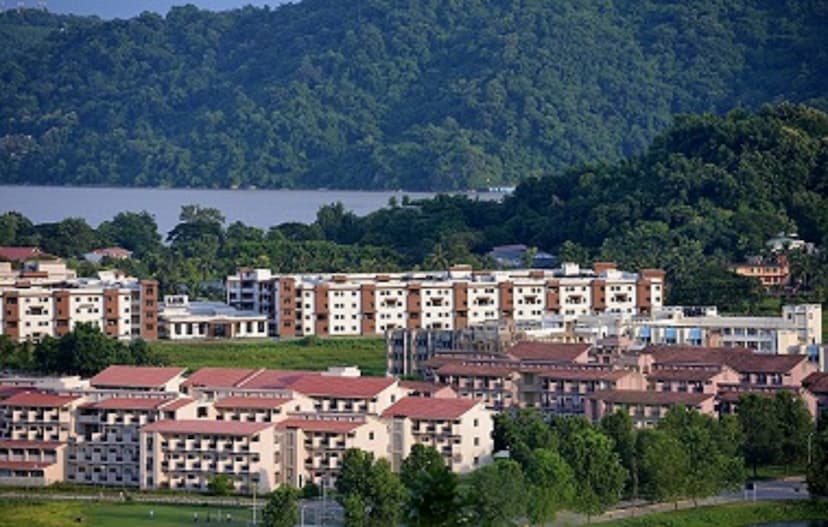IIT Guwahati researchers make great breakthrough in memory architectures

IIT Guwahati researchers made fundamental contributions to memory architectures by preventing redundancy in data values and improving slow and frequent writes in the multi-core processor systems.
When the world is rapidly moving towards research in applied areas, IIT Guwahati researchers have developed methods to solve the problems in computer systems domain.


Team of IIT Guwahati researchers
IIT Guwahati researchers are being led by Professor Hemangee K. Kapoor of Department of Computer Science and Engineering (CSE) at IIT Guwahati.
The team of IIT Guwahati researchers comprise Sukarn Agarwal, Palash Das, Sheel Sindhu Manohar, Arijit Nath and Khushboo Rani.
The findings of the research by IIT Guwahati researchers are published in reputed peer-reviewed journals like IEEE Transactions on Computers, IEEE Transactions in VLSI, IEEE TCAD, ACM Transactions on Embedded Computing Systems, ACM TODAES, ACM JETC, to name a few.


The work
Professor Hemangee who led the team of IIT Guwahati researchers said the application data access patterns are not uniformly distributed and hence leads to several orders of writes to certain memory locations compared to others.
Such heavily written locations become prone to wear-out and thus prevents the use of complete memory device without error corrections, said Professor Hemangee who led the team of IIT Guwahati researchers.
To handle this non-uniformity, IIT Guwahati researchers developed methods to evenly distribute the accesses across the overall memory capacity to reduce the wear-out pressure on heavily written locations and also worked in the area which avoids writing redundant values thus prolonging the wear-out.

Also read ‘Sai University in Chennai offers various courses and admissions are open there currently. Know more about it‘
Professor Hemangee K. Kapoor slow and frequent writes can be re-directed to temporary SRAM partitions sparing the NVM from getting written with such frequent accesses. Such structures are called hybrid memories.
‘IIT Guwahati researchers team is also working on extending them to off-chip main memory.’


The future challenges are to handle lifetime enhancement in presence of encryption methods used to secure the Non-volatile memory and to handle temperature and process technology driven disturbance errors introduced when the cells are read or written, said Professor Hemangee who led the team of IIT Guwahati researchers.
The current and future contributions of IIT Guwahati researchers will help mitigate the drawbacks of promising emerging memories and ease their adaptability.
Once some drawbacks are easily removed, scientists can find newer avenues for using such technologies without worrying about its limitations, say IIT Guwahati researchers.
Artificial Intelligence (AI) and Machine Learning (ML) are used as tools to solve several real-time problems.
However, they involve enormous computations on huge datasets. Building close to memory accelerators to process the data are efficient in performance as well as energy, say IIT Guwahati researchers.
The research team is also working on building customized parallel architecture designs to give better FLOPS, say IIT Guwahati researchers.
Read More – TN SSLC 2021 result

Data creation is also fueled by 5G networks, image processing and real-time voice processing.
All these big-data applications need real-time analysis at run-time and with immediate responses. Better storage and close to memory processing is the need of the hour, say IIT Guwahati researchers.
Non-volatile memory are advised to be used in Internet of things (IoT) and edge devices.
The longevity of non-volatile memory in such devices is crucial for their service guarantees and durability.
Effective lifetime improvement methods will help improving the state-of-the art in this field which is still in its nascent stage.
Read More – IIT Jodhpur researchers
Solutions for better management of NVMs will give them wider acceptance in critical applications including healthcare and autonomous vehicles, say IIT Guwahati researchers.

Indian Institute of Technology (IIT) Guwahati established in 1994 has completed 25 years of glorious existence in 2019.
At present, the Institute has eleven departments, five inter-disciplinary academic centres and four schools covering all the major engineering, science and humanities disciplines, offering BTech, BDes, MA, MDes, MTech, MSc and PhD programmes.
The institute offers a residential campus to 412 faculty members and more than 6,000 students at present. Besides its laurels in teaching and research, IIT Guwahati has been able to fulfil the aspirations of people of the North East region to a great extent since its inception in 1994.
The picturesque campus is on a sprawling 285 hectares plot on the north bank of the Brahmaputra, around 20 kms from the heart of the Guwahati city.









